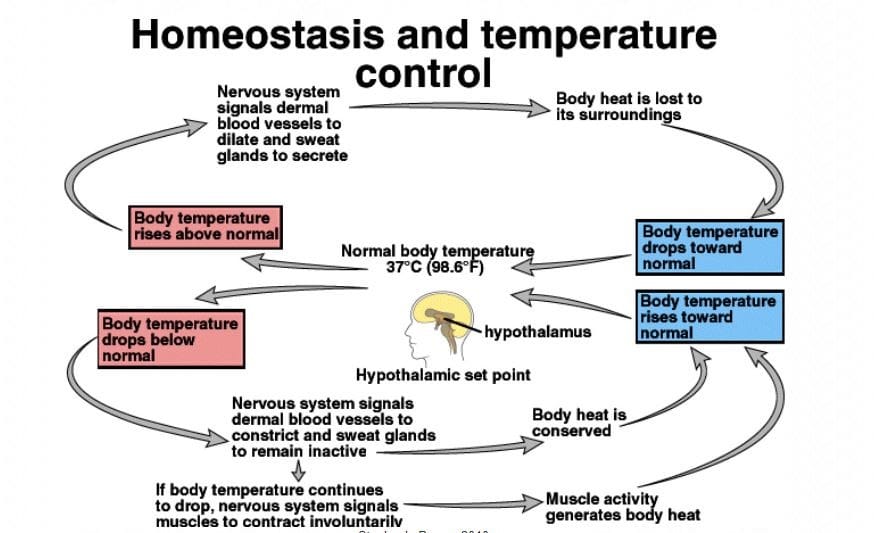
Skeletal Muscle Function
Skeletal muscles assume a vital part in different physical processes, from empowering development to supporting metabolic cycles.How Skeletal Muscle Function Affects The Maintenance Of Body Temperature.
One of their less popular yet essential jobs is in keeping up with internal heat level. This article investigates how skeletal muscle capability adds to thermoregulation and generally speaking internal heat level control.

Understanding Therm regulation
Thermoregulation is the interaction by which the body keeps up with its inner temperature inside a tight, ideal reach, notwithstanding shifting outer temperatures. The human body normally keeps a centre temperature around 98.6°F (37°C). This guideline is fundamental for the appropriate working of compounds and metabolic cycles.
Mechanisms of Heat Production
At the point when skeletal muscles contract, they create heat as a side-effect of metabolic cycles. This intensity is principally created through two kinds of muscle action:
Muscle Contraction and Heat Generation:
- Intentional Activity: Proactive tasks, for example, practicing or in any event, squirming increment muscle withdrawal and intensity creation. For example, during oxygen consuming activity, the metabolic rate can increment essentially, prompting significant intensity age.
- Compulsory Activity: Shuddering is a type of compulsory muscle constriction that happens when the body is cold. Quick, musical constrictions of skeletal muscles produce intensity to warm the body, expanding center temperature.
Basal Metabolic Rate:
Skeletal muscle is a huge piece of weight and adds to the basal metabolic rate (BMR) — the energy consumed very still to keep up with indispensable capabilities. A higher bulk expands BMR, and that implies more intensity is delivered in any event, when the body isn’t dynamic.
The job of Blood Stream (Skeletal Muscle Function)
Skeletal muscle capability likewise impacts blood stream, which is basic for temperature regulation:
Heat Distribution:
During active work, blood stream to working muscles increments, which disperses the intensity produced by muscle compressions. The intensity is then shipped to the skin’s surface, where it very well may be lost to the climate.
Vasodilation and Vasoconstriction:
At the point when the internal heat level ascents, veins in the skin expand (vasodilation) to increment heat misfortune through radiation and convection. Alternately, in cool circumstances, veins tighten (vasoconstriction) to protect body heat, coordinating blood stream away from the skin and towards essential organs.
Hormonal Regulation
Skeletal muscles additionally cooperate with the endocrine framework to control temperature:
Catecholamines:
During exercise or in light of cool, the adrenal organs discharge catecholamines (like adrenaline), which increment metabolic movement in muscles, upgrading heat creation.
Thyroid Hormones:
Thyroid chemicals impact metabolic rate and, therefore, heat creation. Expanded thyroid chemical levels can lift the metabolic pace of skeletal muscles, adding to temperature support.
The Impact of Environmental Factors
- Exercise in Various Environments: The body’s capacity to keep up with temperature can be tested by outrageous ecological circumstances. In blistering climate, expanded muscle action can prompt overheating, provoking components like perspiring for heat scattering. Alternately, in cool conditions, skeletal muscles enact shuddering to produce heat.
- Adaptation: Normal openness to outrageous temperatures can prompt physiological transformations. For example, competitors preparing in the intensity might foster superior perspiration reaction and blood stream effectiveness, upgrading their capacity to control temperature during extraordinary activity.
Conclusion
Skeletal muscle capability is basic to thermoregulation, influencing internal heat level through heat creation, blood stream elements, and hormonal cooperations. By creating heat during compression, changing blood course, and answering ecological improvements, skeletal muscles assist with keeping up with the body’s inward temperature inside a protected reach. Understanding this relationship features the significance of muscle wellbeing for actual execution as well as for generally speaking physiological equilibrium.
